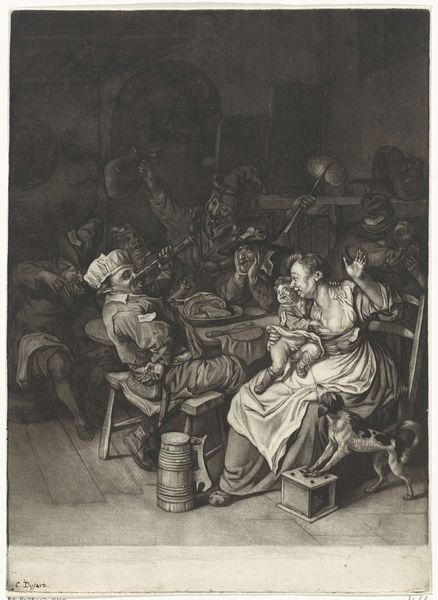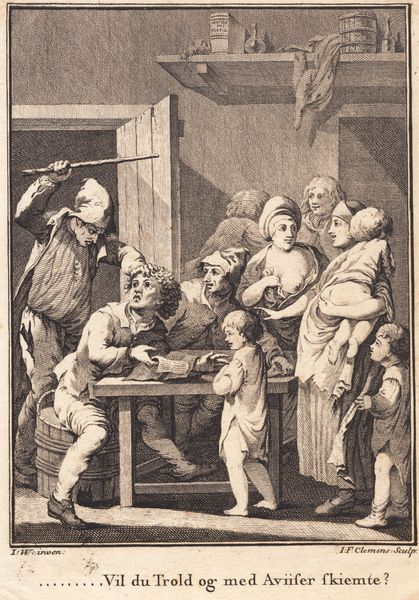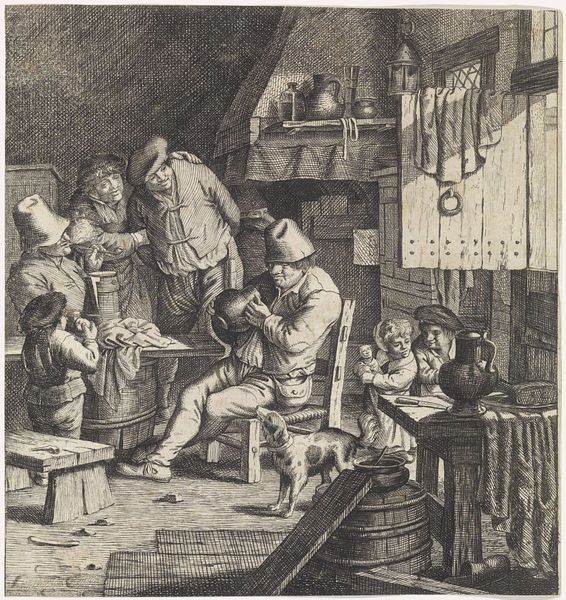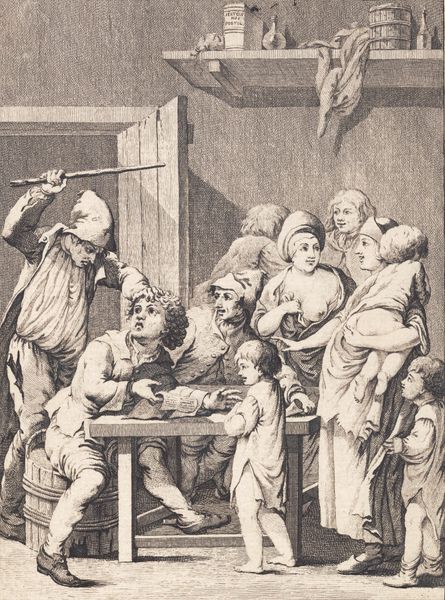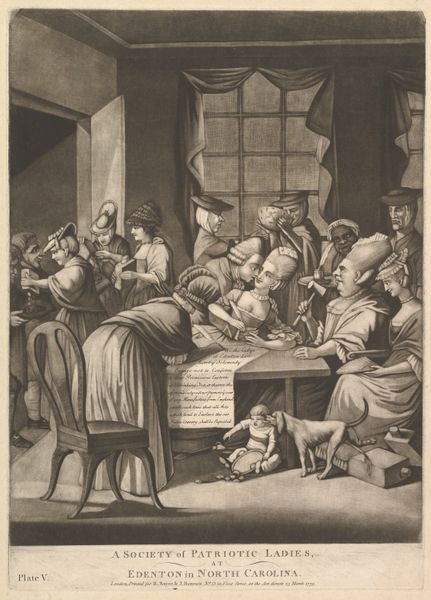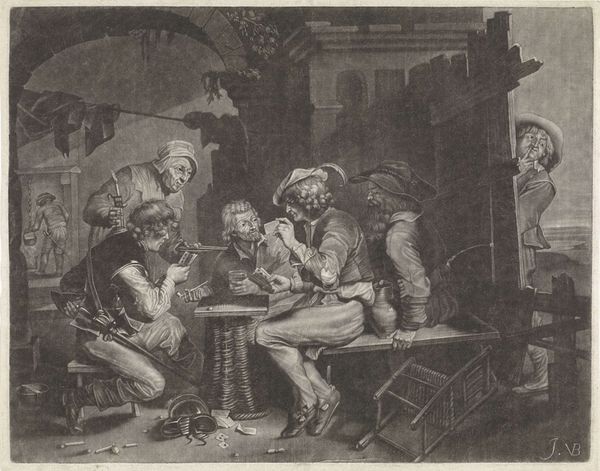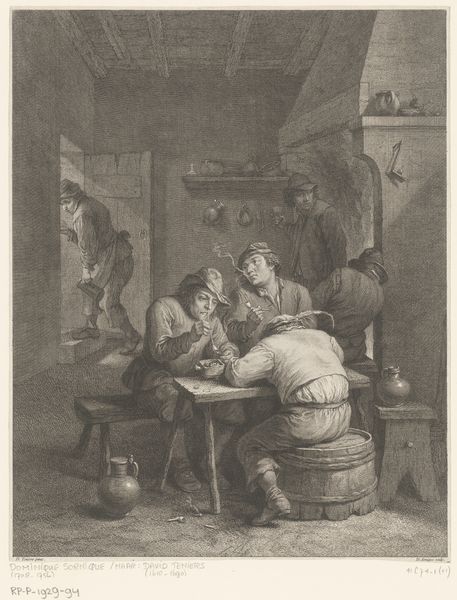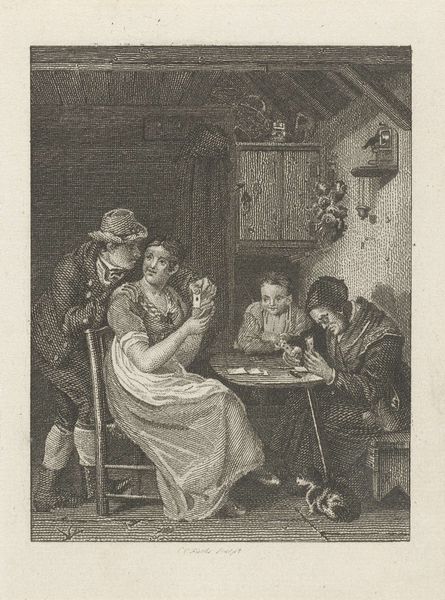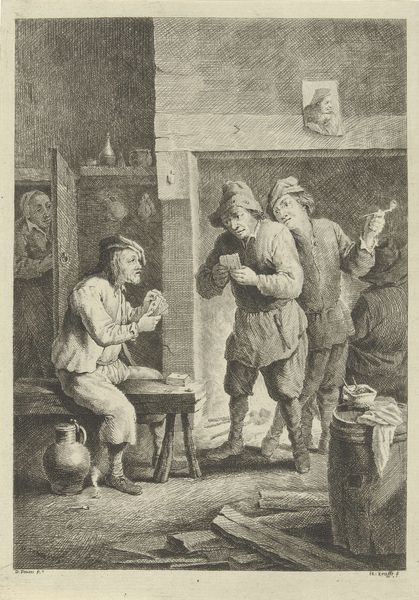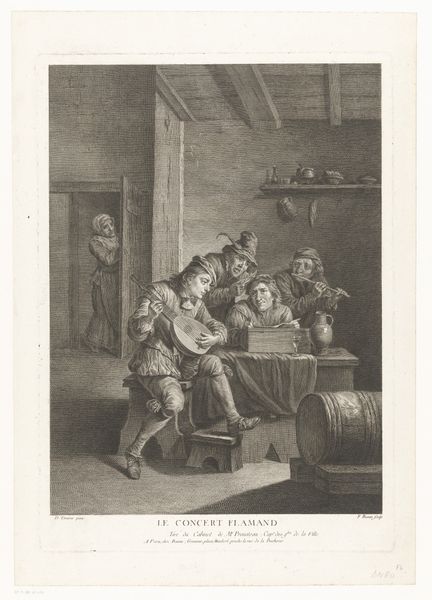
drawing, print, engraving
#
drawing
#
baroque
# print
#
old engraving style
#
limited contrast and shading
#
genre-painting
#
history-painting
#
engraving
Dimensions: height 272 mm, width 197 mm
Copyright: Rijks Museum: Open Domain
Jacob Gole created this print, "Driekoningen," sometime between 1660 and 1737. The etching depicts a raucous celebration of the Epiphany, or Three Kings Day, a Christian feast commemorating the visit of the Magi to the infant Jesus. Made in the Netherlands, a Protestant country, the image takes aim at Catholic traditions through its depiction of excessive revelry and the figure of the jester. The composition suggests a world turned upside down, perhaps commenting on social hierarchies or the critique of religious authority during this period. The print can be seen to reflect broader shifts in the social function of art. As Dutch society became more urban and commercial, the art market expanded and artists increasingly produced images for a broader public audience. Understanding the symbolism, we can consult primary sources, like contemporary texts, religious tracts, and other visual art. These resources can help to explore how art reflects and shapes cultural values, social structures, and political debates.
Comments
No comments
Be the first to comment and join the conversation on the ultimate creative platform.
